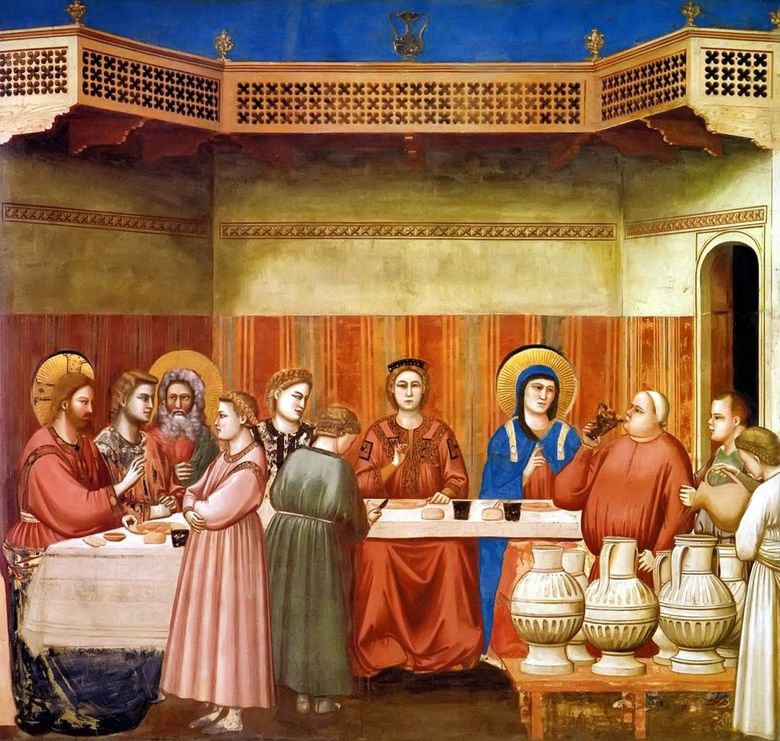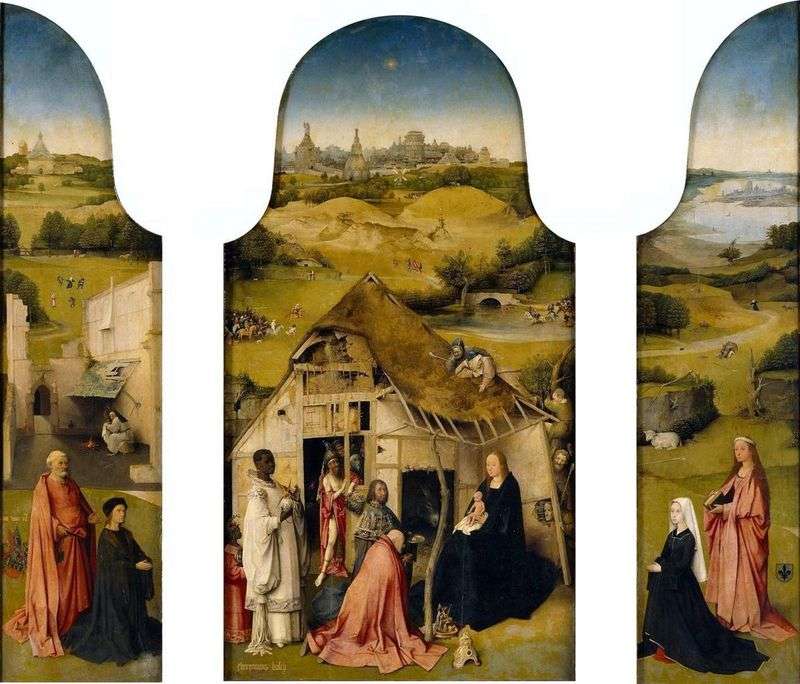
In the painting “Brake in Cana,” Bosch departs from tradition, the scene depicted here is imbued with alarming, diabolical tension. It seems that the mysterious little character in the wreath, standing with his back to the viewer, starts a strange ceremony, and the magician with a magic wand in the background helps him to spit out the flame, smash the servant, someone peeps from the garden, the owl peeps out from behind columns, and standing on it a marble devil comes to life and hides in a niche fleeing from the arrows of his brother.
Christ sits alone, in a place of honor under a canopy with a tapestry, with complete indifference of those present. Painting Hieronymus Bosch “Marriage in Cana” is considered an early work created between 1475 and 1480 years. Security is bad. In the traditional plot of the first miracle created by Christ – the transformation of water into wine – Bosch introduces new elements of the mystery.
The psalmist who stands with his arms raised in front of the bride and groom, a musician in an improvised gallery, a master of ceremonies showing a delicate workmanship, a servant who falls into a faint – all these figures are completely unexpected and unusual for the depicted plot and are those details that convince us of the reliability of what is happening.
 Marriage in Cana of Galilee by Giotto
Marriage in Cana of Galilee by Giotto Matrimonio en Caná de Galilea – Hieronymus Bosch
Matrimonio en Caná de Galilea – Hieronymus Bosch Mariage à Cana de Galilée – Jerome Bosch
Mariage à Cana de Galilée – Jerome Bosch Saint Christopher by Hieronymus Bosch
Saint Christopher by Hieronymus Bosch The Crucifixion of Christ by Hieronymus Bosch
The Crucifixion of Christ by Hieronymus Bosch Mariage à Cana de Galilée – Giotto
Mariage à Cana de Galilée – Giotto Seven deadly sins and the last four things by Hieronymus Bosch
Seven deadly sins and the last four things by Hieronymus Bosch Adoration of the Magi by Hieronymus Bosch
Adoration of the Magi by Hieronymus Bosch